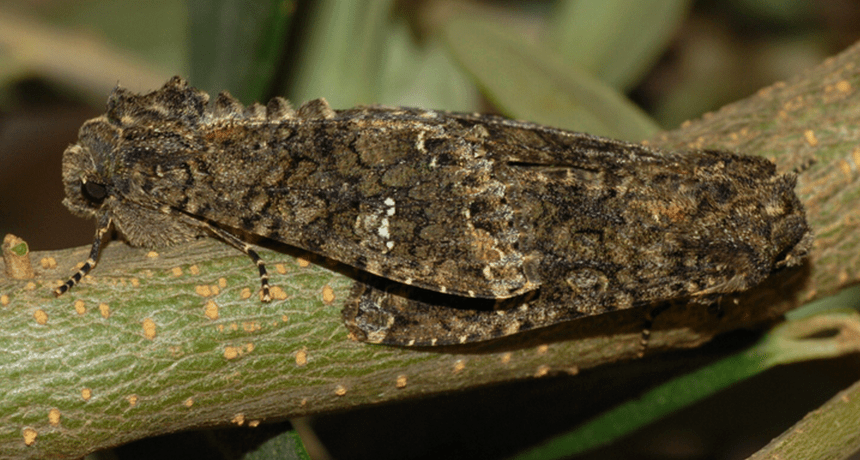
MOTH MATES Too much artificial light at night can undermine the chemical attraction between cabbage moths like these.
Lou van der Linde
Harsh lighting doesn’t ruin the chemistry of romantic trysts just for humans. Artificial lighting can miscue female moths into sending out skimpy, and possibly stinky, scents instead of their usual potent come-hithers.
In lab tests exposing cabbage moths to the equivalent of LED street lighting, females produced on average only about one- to two-thirds the amounts of their usual seductive pheromone, says ecologist Roy van Grunsven of Wageningen University in the Netherlands.
Light-exposed Mamestra brassicae females also got their recipe wrong. They skimped on the main attractant among the nine components blended into their species-specific brew. And three components known to repel males if overused were disproportionately strong, van Grunsven and his colleagues report in an upcoming issue of Ecological Entomology.
It’s the first study to specifically test whether artificial night lighting disrupts moth sex pheromones, says network ecologist Callum Macgregor of the University of Hull in England. It adds to worries that light pollution contributes to declines in moth populations. In Great Britain, one of the few places with moth census data, populations of two-thirds of widespread, big moth species have gone into decline, he notes.
These declines could have major ecological effects that people will notice in broad daylight, Macgregor says.
Moths are pollinators but may not get due credit because they work the night shift, he and colleagues point out in an article in the June Ecological Entomology. “A huge variety of plants are moth-pollinated in loads of different taxa, in loads of different habitats, in loads of different places around the world,” he says
And then there’s baby food. “If you look at all these small birds that are breeding right now, a lot of them rely on moth caterpillars” to feed their chicks, van Grunsven says. The Netherlands has only about 50 butterfly species but about 2,000 kinds of moths.
To test the effects of night lighting, van Grunsven and his colleagues set developing female cabbage moths in containers under white, red or green LED lights inside a greenhouse. Cabbage moths can be a pest on farms, but it’s a good species to study because researchers already know which of their pheromone ingredients attract males and which can repel them if overused. Biologists also know that a substance nicknamed PBAN, which regulates pheromone production in these and many other moths, is sensitive to light.
Soon after the young females emerged to mate, researchers checked pheromones stored in their glands. Moths under all three light regimes showed disruption in the amounts and the composition of their pheromones.
Substandard pheromones might help explain the results of another recent moth study. Researchers including van Grunsven discovered dips in the percentages of winter moths (Operophtera brumata) that had mated on oak tree trunks illuminated with white, red or green LEDs. Depending on the color of the light, only 13 to 28 percent of females caught on trunks carried any sperm, the researchers report in an upcoming issue of Insect Conservation and Diversity. Yet more than half of females found on dark tree trunks had mated.
Nocturnal animals like moths often get overlooked by (diurnal) people, van Grunsven says, but some 60 percent of animal species are active at night. “The concept that darkness is essential for nocturnal animals and that the conservation of darkness is worthwhile — that’s pretty new.”





